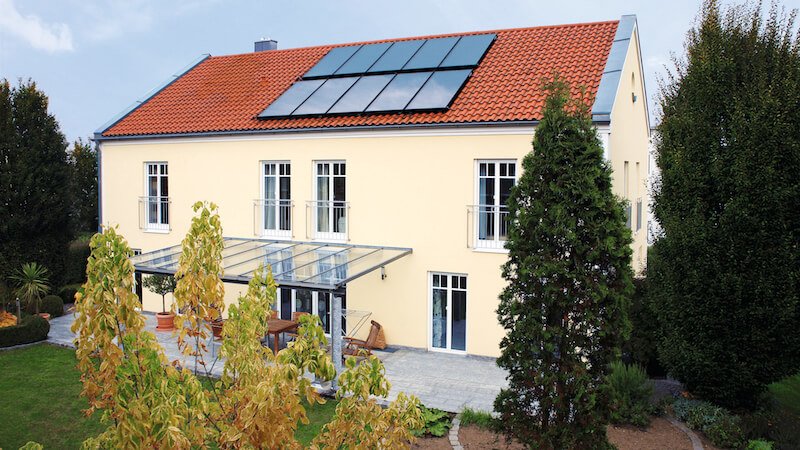
In addition to generating electricity via solar systems, it is also possible to generate heat using solar thermal energy on the roof of the house. But how does a solar thermal system actually work?
The energy transition is in full swing. Because more and more solar and wind power plants are starting up and making the power grid more sustainable. As a result, homeowners often take the initiative themselves and become self-sufficient with systems on their roofs.
Most of the time we are talking about solar systems that convert the energy from the sun into electricity. There is another technology that is suitable for house roofs: solar thermal energy. But how does a solar thermal system actually work?
How does a solar thermal system work?
Building a solar thermal system is usually more complex, as it requires a professional to connect the system to a household’s water supply. Common providers offer two solutions for this. The DHW cylinder and a heating water buffer cylinder.
The DHW cylinder is filled with drinking water and runs through the solar panel via a pipe. The incident solar radiation heats the water and then makes it directly available to the consumer (e.g. as tap water or water for showering). If the sun is not enough, a boiler will also step in.
The heating water buffer cylinder has a similar structure, but focuses primarily on heating buildings. Here, the heating water flows through the panel via a pipe and absorbs the incident energy from the sun.
The water then enters the building’s heating system, such as underfloor heating or a radiator. If the sun is not enough, a gas heater or a heat pump steps in.
Solar thermal: State funding possible
A pump then sends the water, which cools down through the circuit, back onto the roof. A continuous cycle is thus created. Homeowners can save a lot of energy when heating water with a solar thermal system. Depending on the model, a system only requires an additional 0.7 to 1.4 kilowatt hours per day to operate.
The federal government also supports the construction of solar thermal systems. The federal funding for efficient buildings for individual measures provides grants of around 25 percent. Funding is limited to EUR 60,000 per calendar year and includes attachment to private households. This could prove useful for homeowners in the long run.
Also interesting:
Source: https://www.basicthinking.de/blog/2023/08/02/wie-funktioniert-eine-solarthermieanlage/


